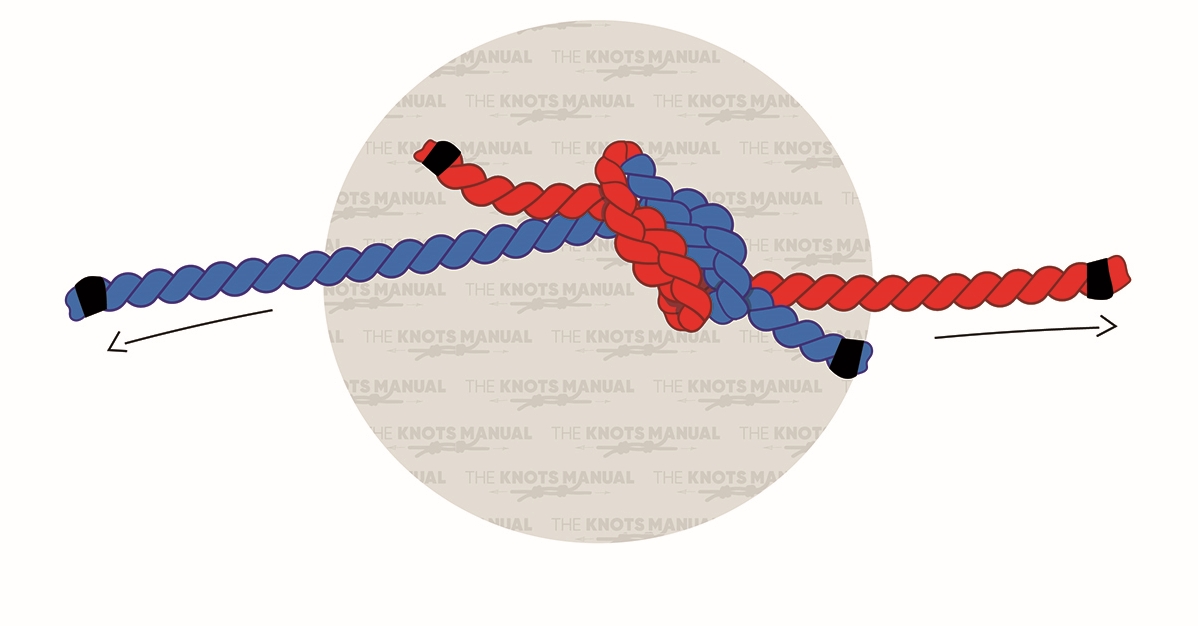The fisherman’s knot is a bend that joins two ropes and is most commonly used for fishing. They are easy to tie and good for wet conditions, but they don’t work well with lines made from slippery materials.
Although these knots are mostly used for fishing, they have other uses as well. They are popular in knitting and crocheting. Some couples also use them as part of their wedding ceremony to symbolize the bonding of their lives.
There are six knots similar to the fisherman’s knot:
- The double fisherman’s knot
- The triple fisherman’s knot
- The Flemish bend
- The Flemish knot
- The Zeppelin bend
- The blood knot
Follow the simple directions below to learn how to tie the fisherman’s knot.
What Is The Fisherman’s Knot?
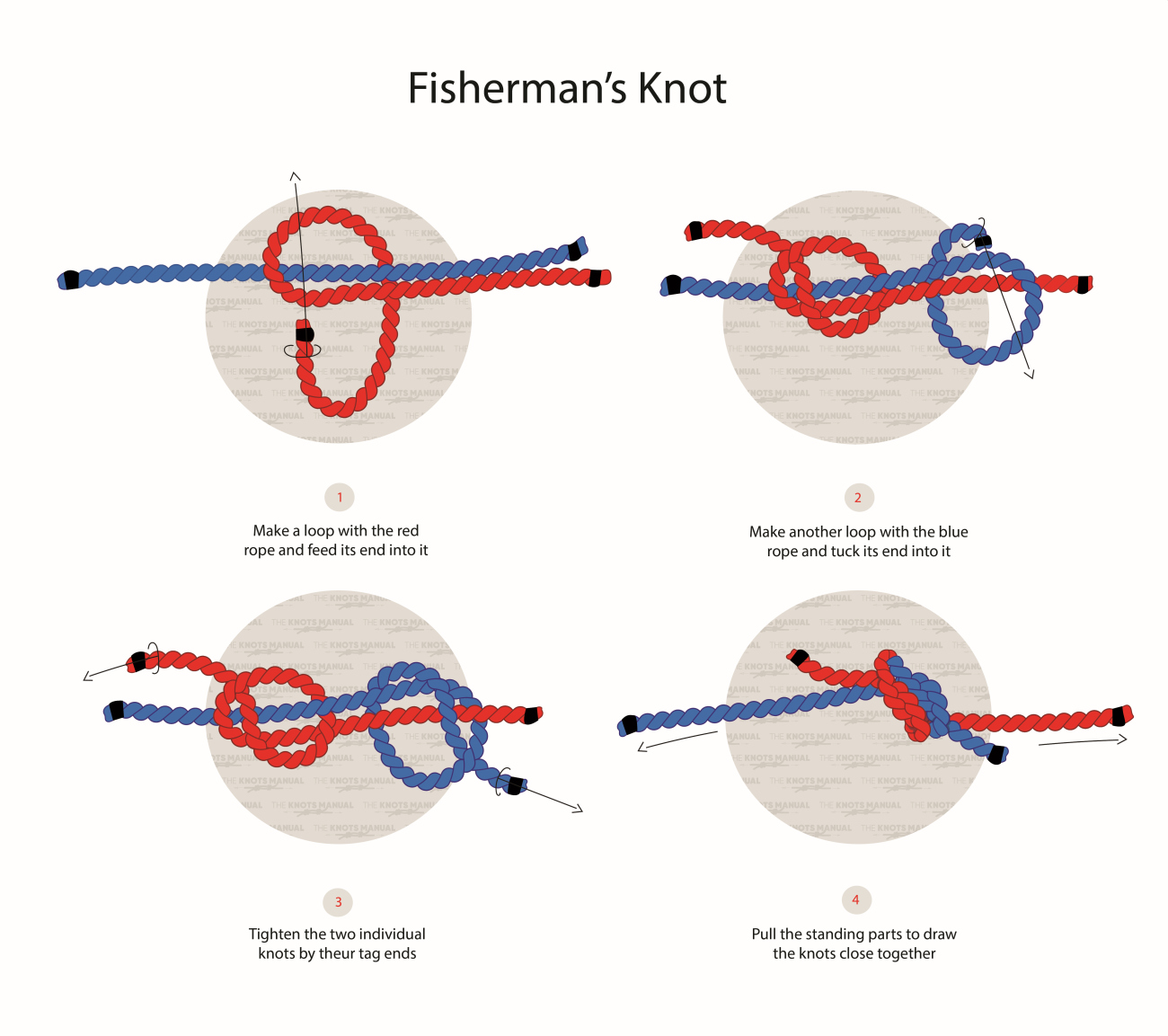
Fisherman knots are bends that join two separate ropes together. These knots are symmetrical and comprise two overhand knots. Each overhand knot ties around the standing end of the other rope.
Other names for the fisherman’s knot include:
- Angler’s knot
- Halibut knot
- English knot
- True lovers’ knot
- Waterman’s knot
As the name suggests, the fisherman’s knot is most known for its use in fishing.
These knots are useful because you can create many overhand knots. Doing so makes the holding strength of your line greater. They jam easily, which is helpful when fishing. You can cut the ends of the line close to the knot, and the knot is very compact, so it doesn’t interfere with your fishing.
Fisherman’s knots are also very easy to tie, making them ideal when you’re working in cold, wet conditions. They are also ideal for wet conditions because they don’t slip when under the strain of a normal load.
You can use these knots to join two lines of differing diameters. Yet, they work best when using lines with similar diameters.
Unfortunately, these knots don’t work very well with nylon monofilament lines. The knots slip easily with slippery materials and don’t hold up well. The jamming common with these knots can be a problem if you’re using the knot for anything other than fishing. The jamming quality makes these knots difficult to untie.
How To Tie A Fisherman’s Knot
Follow the simple steps below to learn how to tie simple fisherman’s knots:
Begin with two ropes lying horizontally next to each other.
Step 1:
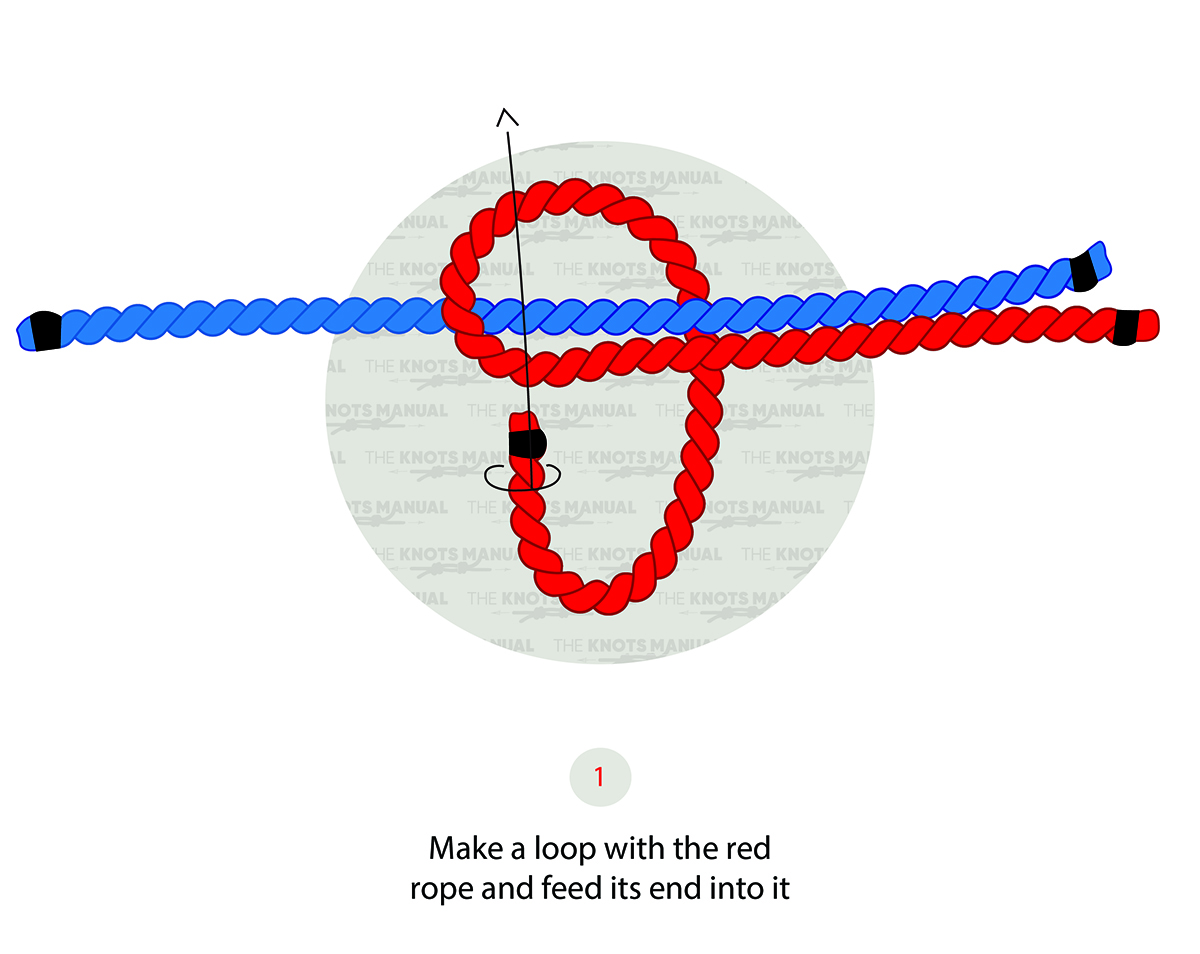
First, make a loop with the red rope. To do this, pass the working end of the red rope over the standing end of the blue rope. Then, pass the working end of the red rope underneath the standing end of the blue rope. Pass the working end of the red rope through the loop you just created.
Step 2:
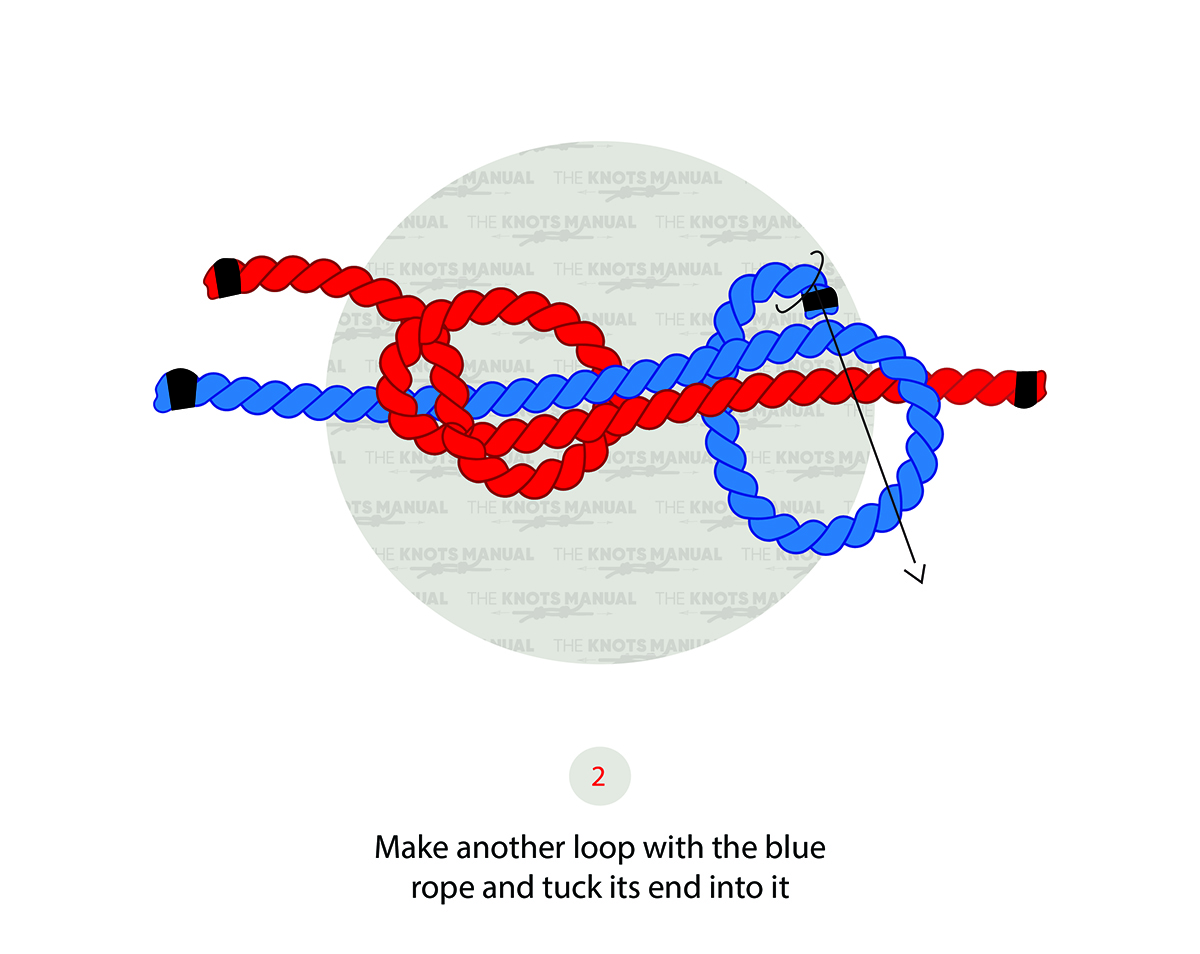
Following the above instructions, make another loop using the blue rope. Pass the working end of the blue rope through the loop you just created.
Step 3:
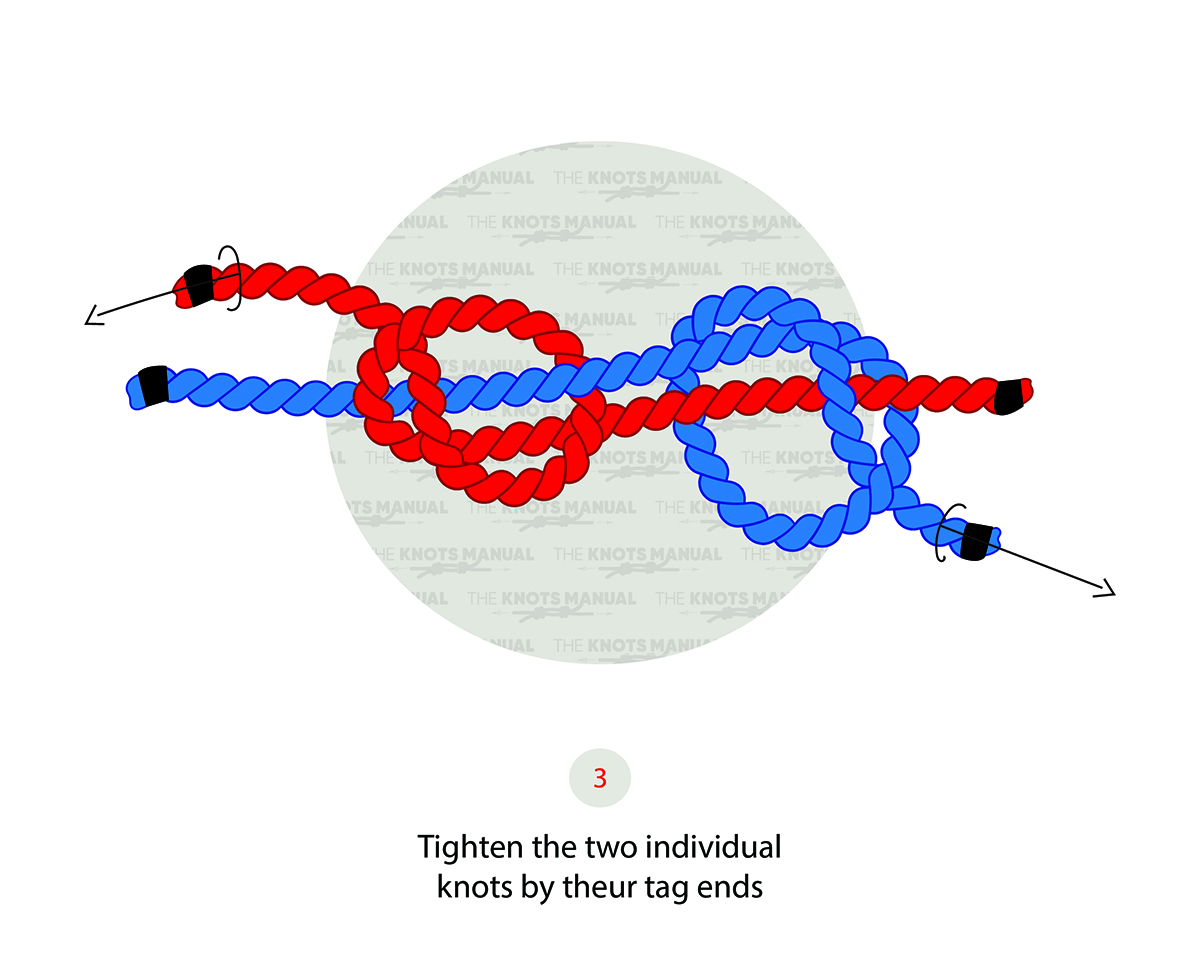
Pull on the tag end of the red rope to tighten the individual knot created. Do the same with the blue rope.
Step 4:
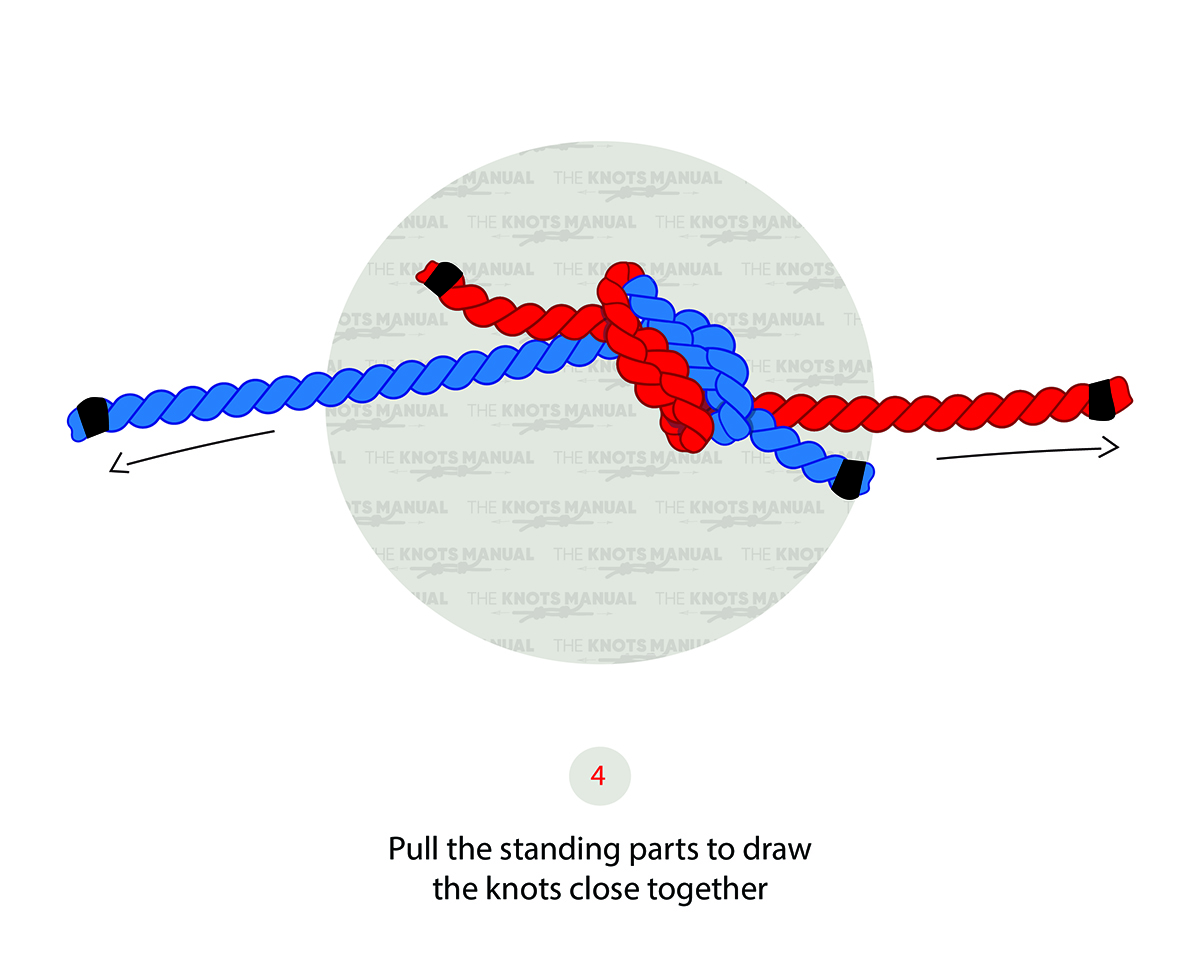
What Are The Uses Of A Fisherman’s Knot?
It probably comes as no surprise that the fisherman’s knot is used for fishing. Still, the sturdy, compact knot has a variety of other uses, too.
Fishing
The primary use of the fisherman’s knot is to connect two fishing lines while fishing. Connecting two fishing lines gives you more length to work with, so you can pitch your line out further.
Knitting & Crochet
The fisherman’s knot is commonly used in knitting and crocheting. It is helpful for joining two separate strands of yarn. Crafters often use this knot as a way to transition from one thread to the next flawlessly. They are particularly helpful when switching colors. Fabric artists usually refer to this knot as the “magic knot.”
A Fisherman’s Knot Wedding
You’ve likely heard the term, “tying the knot” in reference to getting married. Couples used to tie knots during their wedding ceremonies. They did so as a symbol of joining their lives together. Some couples still practice this ceremony using the fisherman’s knot.
Handfasting — The Original Knot-Tying Wedding Tradition
The knot-tying wedding tradition began during roman times. A bride would wear a belt with a “Hercules knot,” what we today know as the “square knot.” The knot represented the binding force of marriage.
The term “tying the knot” came from the Celts, who practiced the tradition of “Handfasting.” Handfasting was the act of fastening the hands of a couple. Couples did this during an engagement ceremony using pieces of cloth.
Then came the rise of Christianity. Handfasting became a ritual practiced during the wedding ceremony. Using it as an engagement ritual became less common. Today, some couples still use handfasting in their wedding ceremonies. They see it as a homage to the ancient tradition.
The Fisherman’s Knot, Or True-Lovers’ Knot
The meaning behind the fisherman’s knot is a bit different. Sailors had been using knots for practical uses for centuries. Around the 19th century, sailors began using knots to create art.
As the legend goes, the fisherman’s knot symbolizes the linking of two lovers’ hearts. A sailor would tie the knot loosely and send it home to his lover. Upon receiving the knot, the sailor’s lover could either loosen it, leave it untouched, or tighten it.
Untying the knot meant she didn’t want to see him again. Leaving it loose meant she wanted him home but wasn’t happy with him. Tightening the knot meant that he should come home as soon as possible. She would then send the knot back to her sailor to pass along her message.
Today, couples often tie a fisherman’s knot during their wedding ceremony. It is meant to symbolize the strength of their bond. The fisherman’s knot is one of the strongest knots and is unlikely to break. The two strands represent the individuals. As the couple ties the knot together, it symbolizes the joining of their two lives.
Other Uses
Six other uses of the fisherman’s knot include:
- Scouting
- Making nets
- Tying webbing
- Rock climbing
- Arborists
- Macrame
Knots Similar To The Fisherman’s Knot
Double Fisherman’s Knot: These knots are more secure than the single fisherman’s knot. They don’t use overhand knots like the fisherman’s knot. Instead, they use double overhand knots. The double overhand knots are used in their “strangle knot” forms. They are often used for joining two climbing ropes.
Triple Fisherman’s Knot: These knots are more complicated. The working end wraps around the standing end three times for each two stopper knots. Then, the standing end threads through the loops. You can also create a quadruple fisherman’s knot. Simply wrap the standing end four times instead of three.
Flemish Bend (Figure-8 Bend): These knots join two ropes of similar diameters. You weave a loose figure-8 into the end of one rope. Then, you thread the other rope backward, parallel to the first. Climbers most often use these knots.
Flemish Knot (Figure-8 Knot): These are non-binding stopper knots that are quick and easy to tie. They are often used by climbers, arborists, boaters, and animal handlers.
Zeppelin Bend (Rosendahl Bend): These knots connect two ropes. They form two symmetrical, interlinking overhand knots. They are highly jam-resistant and shake-resistant. They are great for heavy loads and make a suitable alternative to the double fisherman’s knot.
Blood Knot: These are one of the most common knots used by fly fishermen. Like the fisherman’s knot, blood knots can join two ropes of similar sizes. You must complete at least five to seven wraps around each side of the center of the knot. Doing so creates an especially strong knot.
FAQs
How Strong Is A Fisherman’s Knot?
Fisherman’s knots are relatively strong for fishing purposes. Still, you should never use them for critical loads. The blood knot and the Palomar knot are usually considered stronger.
What Other Knots Are Popular For Fishing?
There are five kinds of knots that every fisherman should know. You already know the first one: the fisherman’s knot. The other four knots are just as essential and will make your life easier on the water.
1. Palomar Knot — the most basic fishing knot, but also the strongest. Difficult to break and suitable for slippery line materials.
2. Uni Knot — similar in strength and durability to the fisherman’s knot. Quick and easy to tie and suitable for lines made of slippery material.
3. Hay Wire Twist — suitable when using steel fishing leader, but challenging to tie.
4. The Snell — the strongest knot for tying hooks to fishing lines as it is nearly unbreakable.
